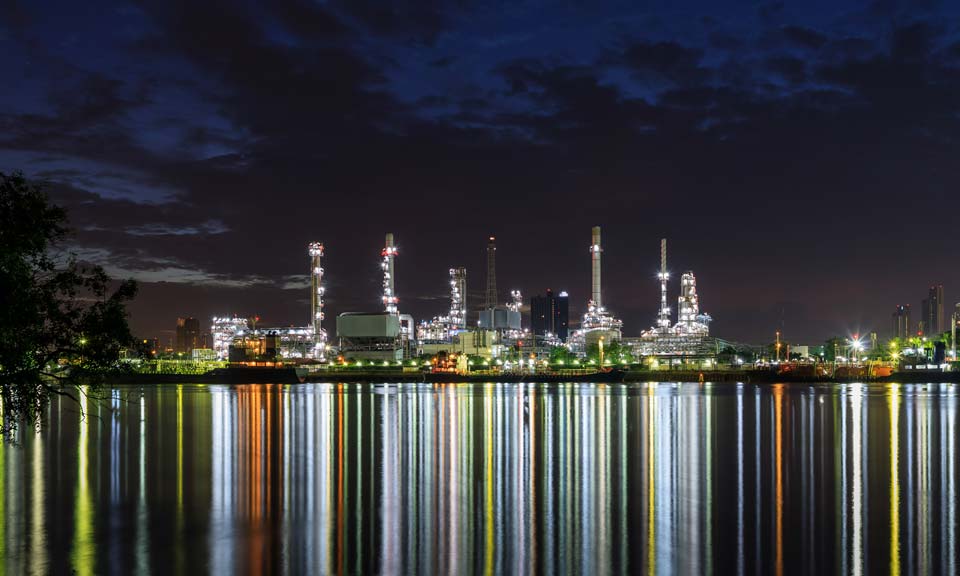Oil demand from petchems to stay robust in any energy-transition scenario: Aramco

Oil demand from the petrochemicals sector is likely to remain robust "no matter which energy transition scenario plays out," said Amin Nasser, Saudi Aramco president and CEO, on Dec. 6, the opening day of the 16th Gulf Petrochemicals and Chemicals Association (GPCA) Annual Forum, being held for the first time in Riyadh, Saudi Arabia.
Under a net-zero scenario, petrochemicals could still account for more than half of total global oil demand by 2050, said Nasser in a keynote speech. "The more intense the transition, the more important petrochemicals will be to the oil and gas industry, and other industries," he said.
The ongoing downstream push by state-owned Aramco to convert more of its crude oil to chemicals was highlighted by Saudi Arabia's energy minister, Prince Abdulaziz bin Salman, as he inaugurated the forum. Flagging the previously stated Saudi Arabian goal to expand Aramco's liquids-to-chemicals capacity to 4 million barrels per day by the end of the decade, the minister said, "We shall deliver it." Aramco will be able to "work for the full chain of chemicals, including specialty products. And every molecule we produce, we will ensure that we use it, consume it, produce it, and send it as a finished product," he said.
Aramco recently announced plans for the first large-scale deployment of its crude-to-chemicals cracking technology at the company's S-Oil affiliate in South Korea, and a joint project between Aramco and Sabic to develop a crude-to-chemicals complex at Ras al-Khair, Saudi Arabia. Aramco is the parent of Sabic.
"These are major steps forward in our downstream business, and show the power of technical innovations to meet our ambitions. More advanced, more sustainable materials would undeniably strengthen the power of our net-zero ambition and our chemicals strategies," said Nasser. "Our strategy to convert up to 4 million barrels per day of liquids into chemicals by 2030 is beginning to take shape."
Nasser went on to highlight to a packed audience what he describes as a crucial component "largely missing from the net-zero debate—the enormous impact that growth in material use will have on reducing global greenhouse gas emissions." Labeling it the materials transition, Nasser said it is "just as important as the energy transition to climate protection ... and especially relevant to the chemical industry and its future strategies. Global net-zero emissions goals will not be met without a successful materials transition."
Demand for materials including concrete, iron, and steel is projected to more than double from 79 gigatons in 2011 to 167 gigatons in 2060, Nasser said. But materials production, use, and eventual disposal already account for almost a quarter of all global CO2 emissions, he said. "So the increase in materials use, even if somewhat decoupled from economic growth, will be shadowed by a further rise in CO2 emissions, particularly in hard-to-abate-industries," Nasser said.
To help reduce emissions in this growth environment, more durable and more sustainable advanced materials "must be the building blocks of 21st century life," he said. This is where chemistry in action could shape a lower-emission, more sustainable future through a circular carbon economy and better materials efficiency, he said. However, the cost of advanced composite materials is much higher than that of steel, aluminum alloys, and concrete, and Nasser called on the chemical industry to reduce its costs through further innovation.
The "big opportunity" for the chemical industry is steadily to supplement existing materials with more durable, sustainable, and lower-carbon alternatives including polymer- and carbon-based materials, he said. "Already, every 1 megawatt of installed renewable energy capacity utilizes 8 to 11 tons of petrochemicals-based materials. This will bring a viable path to a truly sustainable materials future within reach and is exactly why we are strengthening our focus on materials transition at Aramco, making it a central part of achieving our 2050 net-zero ambition."
Lower-carbon hydrogen will also play a major role in a variety of applications in the chemical industry, according to Nasser. "It can produce ammonia and methanol, or be used as a clean energy source in steam crackers, and in turn can produce more sustainable fertilizers, plastics, and other industrial products," he said. Aramco and Sabic recently obtained the world's first independent certification for the production of blue hydrogen and blue ammonia.
Abdulrahman al-Fageeh, GPCA chairman and CEO of Sabic, said in an opening speech that with global economic growth predicted recently by the International Monetary Fund to fall to 2.7% in 2023 from 3.2% in 2022, concerns about a global recession are already impacting demand for chemicals. The chemical sector usually feels the effects of a recession "two to three quarters before the global economy," he said. "I can tell you ... it has already begun for chemicals."
However, the chemical industry "has always managed to overcome the challenges that it is facing. The key to our success is by seizing every opportunity that challenges bring. Through such action, the GCC can shape a sustainable future."
This year's annual forum is being held under the overall theme Chemistry in Action: Shaping a Sustainable Future.
News
Geopolitical pressures — including rising resource nationalism and a year in which over 50% of countries will be having elections — as well as inflationary pressures have sent energy transition progress into “discord.” A specialty chemicals panel session held March 19 at the World Petrochemical Conference by S&P Global in Houston, Texas, tracked the challenges and opportunities of the energy transition for the industry. Speaking at the session, Roman Kramarchuk, head of climate markets and policy analytics at S&P Global Commodity Insights, said that if the short-term scenario continues, global temperatures could rise 2.4 degrees Celsius by 2100, far above the Paris Agreement’s goal of a 1.4-degree increase. “Over the past few years, we’ve certainly been trending more towards our ‘discord’ scenario,” Kramarchuk said. “We’re trending toward a longer runway for fossil fuels and less [greenhouse gas (GHG)] emission reductions. This is a case of less GDP growth, less trade and less technology transfer.” Since 1990, world GHG emissions have grown 45%, with mainland China, India and the Middle East representing the biggest increases in emissions, at 304%, 241% and 181%, respectively. Over the last 25 years, the Commonwealth of Independent States and the EU have cut their emissions the most, with decreases of 39% and 31%, respectively. The US has cut emissions 1% since 1990. Of S&P Global Commodity Insights’ three energy and climate scenarios, only one, “green rules,” has global temperatures near the Paris Agreement’s 1.5-degree goa, with an expected increase of 1.7-degrees Celsius by 2100l. The “green rules” scenario, however, assumes more technology transfer, cooperation and policy-driven outcomes than is currently happening. “2030 is not that far away,” Kramarchuk said, “and when you think about what the energy transition will take, solar panels can be constructed fast, but anything beyond that — like an onshore or offshore wind plant or a nuclear unit — we’re getting into lead times of 5, 10, or 20 years.” While the US Inflation Reduction Act has helped speed these transformational energy products along, there are still a lot of slowdowns in permitting, especially in Europe. “We joke that there needs to be a ‘Complexity Reduction Act’ in Europe to move things forward,” Kramarchuk said. Harald Schwager, deputy chairman of Evonik Industries AG’s executive board, added that companies are stuck in a hard place. Evonik has signed power purchase agreements (PPAs) to be powered fully by renewable energy by 2030. “The question will be, will production capacity be hampered by the regulatory process and will we have sufficient infrastructure in place to transport enough renewable power for site demand by then,” Schwager said. Distant peaks Commodity Insights’ energy and climate base case pegs the peak years for coal, oil and gas demand to be 2022, around 2030 and 2040, respectively. “When there is a surprise need for energy,” Kramarchuk said, pointing toward the COVID-19 pandemic and a drought in China, which caused a boost in coal usage, “fossil fuels fill that need.” However, “there’s more investment in renewable capacity than we’re seeing in upstream oil and gas,” Kramarchuk said. Under all scenarios, renewable electricity will be the lion’s share of newly generated energy sourcing. Rebecca Liebert, president and CEO of Lubrizol Corp., said that it is the duty of specialty chemical producers to be agile and proactive in bringing innovative and more sustainable products to market. “Political and technical factors are all things we must account for in our bring-to-market timelines. And we get it right a lot of times, but we get it wrong some of the time. Sometimes you get to market before the market is ready for your product. And I think that’s great, to have a solution on the shelf as the market comes along.” Schwager agreed: “In the specialty chemical industry, we have more good ideas than we have money. And there’s no regret on moves for improved efficiency.” While there has been little movement on target setting and market-based mechanisms for growing renewable energy, COP28’s first global stocktake committee called for “countries to contribute to triple global renewable energy capacity and double global energy efficiency by 2030.” “Even though we are heading for the discord path right now, with all the technology solutions and innovation pushes, we’ll be shooting up ahead towards the ‘green rules’ scenario in the long-term,” Kramarchuk concluded. This article was first published in chemweek.com .

News
Two NGOs appealing against permits Initial plan was to start end of 2023 BASF is facing a delay of the operational start of its newly built precursor cathode active materials (pCAM) plant in Finland due to two non-governmental organizations (NGOs) appealing against already-granted permits, a spokesperson for the German petrochemicals company confirmed to S&P Global Commodity Insights Feb. 27. BASF initially aimed to start commercial production at the Harjavalta plant at the end of last year. “The necessary permit to operate this plant has been granted last year by the relevant authorities,” the spokesperson said. “However, two NGOs have filed an appeal against the already granted permit. Next steps and timing will depend on the furtherance of the judicial process before the Vaasa Administrative Court,” said the spokesperson. The pCAM plant will use renewable energy resources, including hydro, wind and biomass-based power and will be supplied with nickel and cobalt from Nornickel’s adjacent refinery. The plant is part of BASF’s plan to supply the battery industry and subsequently automotive industry with lower carbon emission cathode active material. Platts, part of S&P Global Commodity Insights, assessed cobalt metal in-warehouse Rotterdam at $15/lb on Feb. 26, stable from the previous assessment Feb. 23, while the nickel-cobalt black mass EXW Europe payables was at 54% Feb. 26, also stable.

News
The petrochemical landscape has been transformed in recent years by new technologies and the global energy transition, resulting in numerous production pathways and the development of more sustainable products. S&P Global Commodity Insights has created Chemical Connections , an interactive chart which shows the links between chemicals, from upstream feedstocks to derivative products. The second slide offers a map showing our price assessments and benchmarks for chemicals across the value chain around the world. These prices are used by market participants daily to write contracts, monitor their markets and achieve full transparency around transactions.